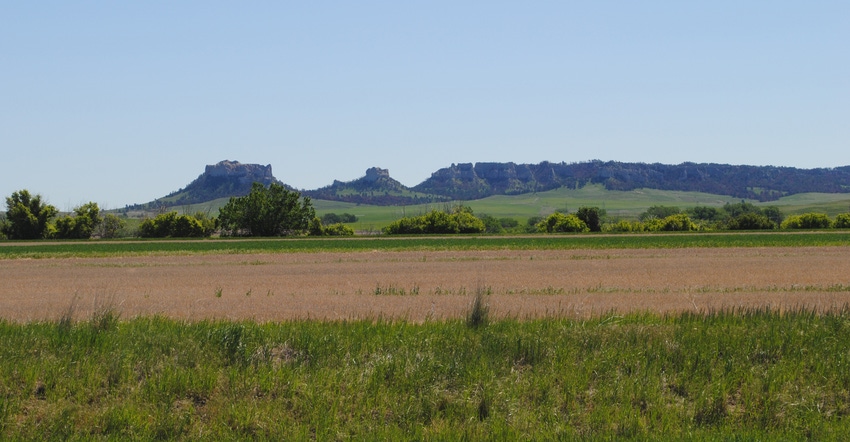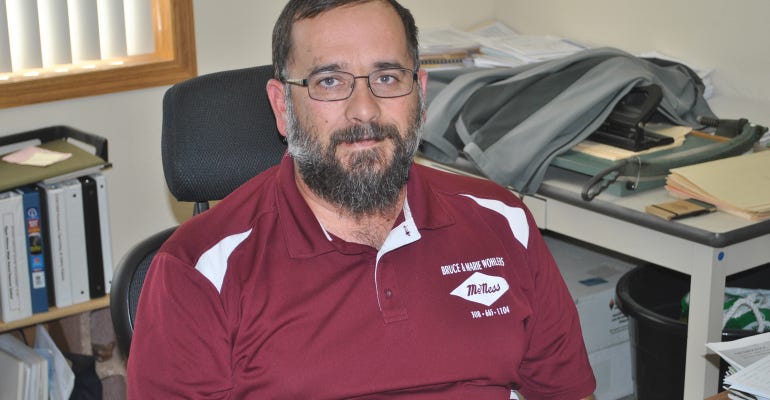
The northwestern part of Nebraska in the Pine Ridge and northern Sandhills of the state typically is the driest part of the region. It’s hard to believe that the driest part of Nebraska could have subareas that are too wet.
The Upper Niobrara White Natural Resources District, based in Chadron, Neb., encompasses Box Butte, Dawes and Sheridan counties and the upper 80% of Sioux County. The district covers 4.5 million acres with diverse resources and ecosystems that include the Pine Ridge forest, Sandhills, rangelands, and irrigated and rainfed cropland. That’s why keeping a close watch on the quality and quantity of water resources in the district is so crucial and challenging.
“Agriculture drives our economy, and potential management strategies that may be developed to help protect water resources for the future are very important to that economy,” says Lynn Webster, assistant manager of UNWNRD. “It is important to look at any options that are available for the management area as a whole and utilize the best information that is available for making decisions that will help maintain the economy.”
To help understand portions of the district that typically have too little water or areas where cropland is heavily irrigated, the UNWNRD commissioned a groundwater recharge potential analysis from HDR Engineering to study the water resources.
“The district and the Nebraska Department of Natural Resources initially began discussions on the project in late 2017 and early 2018,” Webster says. “The NRD board approved moving forward in April 2018. HDR started [its] work in June that summer and issued a report in October 2019.”
According to Webster, a report such as this is useful in planning future activities regarding water management in the district. “The district board is very fiscally responsible, and this type of analytical information will be used in conjunction with analyzing the feasibility of future projects,” he says.
“With localized flooding a problem in some parts of the district, the report could point to establishment of a small structure or two to minimize flooding for those areas,” Webster explains. “If those structures can be installed in an area where recharge potential is higher — rather than in another location not as high — and still achieve flood control, we can utilize funding for both concerns while utilizing dollars in the most efficient way."

IT’S THE ECONOMY: Lynn Webster, UNWNRD assistant manager, says the district's management of groundwater resources affects agriculture in the area and local economies.

Groundwater Management Area Rules and Regulations at UNWNRD enforces groundwater management activities, so study information can be used to implement projects that have the potential to increase recharge.
“If aquifer water levels are not declining, water management controls may be less restrictive or unnecessary, allowing producers more flexibility in their operations,” Webster explains.
A moratorium on new irrigation well permits is in place across the district, but there are exceptions for public water supply. One subarea within the UNWNRD region is realizing increased groundwater levels, so the NRD board is accepting applications for limited well drilling in that subarea only.
“Subarea 3 was not part of the study for recharge analysis,” Webster says. “Increasing static levels in groundwater management Subarea 3 are a challenge to producers. In this area, the board has taken steps to allow limited development of additional acres and well drilling to allow landowners in the area, by an application and ranking process, to produce irrigated feed, mainly through hay production, for their range livestock operations.”
This decision was driven partly by the loss of hay meadows in the subarea to excessive water, where hay production is no longer an option as lakes in the area expand.
Webster notes that this study is something new for the district. “We’ve had an ad hoc committee look at recharge in the district before, but this is the first time we began a formal study to look at recharge,” he says. “If the district can understand recharge potential to a higher level, irrigators could benefit from projects implemented that would increase recharge and sustain long-term irrigation in the area.”
Learn more by contacting Webster at [email protected] or UNWNRD manager Pat O’Brien at [email protected].
About the Author(s)
You May Also Like






